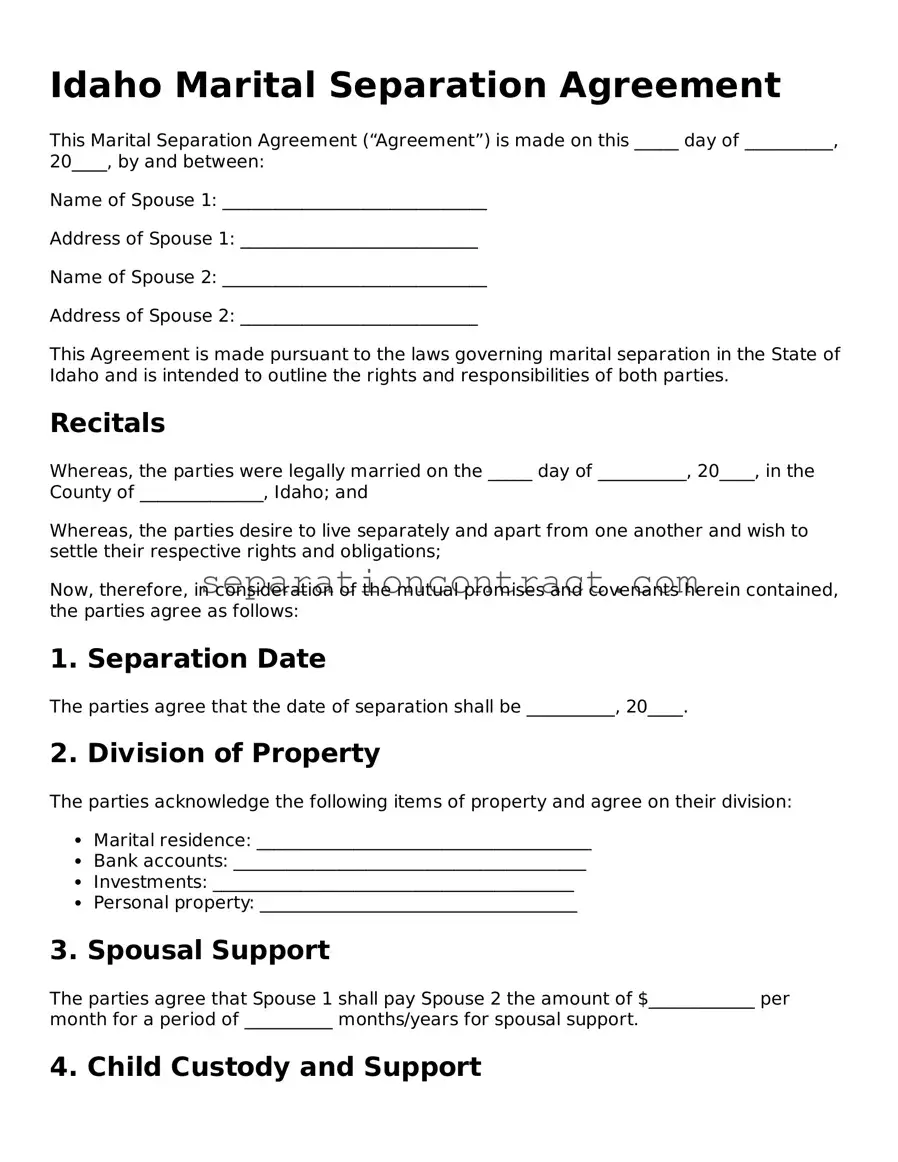Filling out the Idaho Marital Separation Agreement form can be a complex process. One common mistake is failing to include all relevant personal information. Individuals often forget to provide complete names, addresses, or dates of birth. This information is crucial for accurately identifying the parties involved.
Another frequent error involves not specifying the date of separation. This date is important for legal purposes, as it can affect the division of assets and debts. Omitting this detail may lead to confusion or disputes later on.
People sometimes overlook the importance of detailing property division. Many individuals assume that verbal agreements will suffice. However, without clear written terms, misunderstandings can arise. It is essential to list all assets and debts, along with how they will be divided.
Additionally, some individuals neglect to address child custody and support arrangements. If children are involved, the agreement should outline custody arrangements, visitation schedules, and financial support. Failing to include these terms can create complications for both parents and children.
Another mistake is not having both parties sign the agreement. A separation agreement is only valid if both individuals provide their signatures. Some may forget this step, thinking that a verbal agreement is enough, which can lead to issues down the line.
Individuals may also misinterpret the legal implications of the agreement. Some may think that a marital separation agreement is the same as a divorce decree. This misunderstanding can lead to incorrect assumptions about rights and responsibilities following separation.
Another common error is not reviewing the document thoroughly before submission. People may rush through the process and overlook mistakes or inconsistencies. Taking the time to review the agreement can help prevent future disputes.
Lastly, failing to seek legal advice can be a significant oversight. While it is possible to fill out the form independently, consulting with a legal professional can provide clarity and ensure that all necessary elements are included. This step can be particularly important for complex situations involving significant assets or children.
